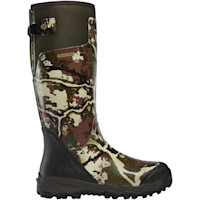
For years, I watched outdoor television with whitetail hunters hunting big food plots and crop fields, telling myself how lucky they are to have those designated food sources. As I grew older, I became obsessed with figuring out how to hunt whitetails in the big woods. I realized there are many good food sources in big timbered areas, but identifying them can be tricky and requires a variety of tactics. In reality, there is an assortment of food sources in the big woods, but I will narrow them all down to the top three that I focus on hunting every year. These are relevant for the entire whitetail range in North America.
Acorns Acorns are probably the number one food source that most hunters think of when it comes to timbered areas on public and private lands. Oak trees that produce acorns can be a deer magnet in the fall. A white oak dropping acorns in October can pull the deer off of the finest food plots, so imagine what it does in an area of monotonous timber. There are a variety of oak types throughout the United States, but the most prevalent are reds and whites. Deer prefer white oaks due to their low tannic acid levels. You can find acorns on the ground as early as September and during a good crop as late as January.
Identifying oak trees on a map can be problematic in the midst of all of the other hardwoods. Oak trees tend to change colors and lose their leaves later than other hardwood trees, so use fall imagery online to find the trees that remain green longer. Since acorn crops can change year to year, take a pair of binoculars and head out at the end of August or early September to look up at what trees are producing for the upcoming season.
Apples When I am scouting, coming across a lone apple tree far back in the woods is like finding a gold mine. I’ve found that apples beat out all other food sources when they are producing and can draw the deer in during daylight hours. Think of apples as a candy treat for the deer. But there are a few downsides to relying on apple trees. They are not always consistent at producing apples, especially in the Northeast, where you can have a late spring frost. The other downside is that they are often close to the roads and easily accessible to other hunters. Apples are generally only a part of my early season plan since they are likely gone by the middle of October, but you can get lucky if you find one that doesn’t drop until later in the season.
You can find apple trees in various locations, but I’ve seen them more times than not in the bottoms and near water.
New Growth Browse Mast crops are a preferred food source for deer in the big woods but are not as big of a part of their diet as you might think. Woody browse makes up most of a deer’s diet but is tough to key on because it seems to be everywhere. You can find the largest amount of browse in logging cuts.
In a cut, sunlight shines through to the ground and helps with new growth, which will provide browse for the deer to feed on and bedding cover when it begins to grow up. When an area is first cut, the loggers tend to leave the tops of the trees laying for an extended period of time, if not indefinitely. These tops provide food in the leaves and twigs that the deer couldn’t reach prior. As the timber cut begins to age, new trees start to sprout and green grasses grow. Once the area ages a few years, briar, dewberry, and blackberry bushes begin to grow thick and create even more food and cover. As the logging cuts get even older, mushrooms start to flourish on old stumps and logs, providing a new food source for the deer. You can sometimes find chokecherry trees that will produce a snack. Logging cuts aren’t necessarily a single food source to key on, but they have a buffet in one location, which acts as an odds multiplier in my book.
Logging cuts are simple to locate on an aerial map. You can identify them on federally owned public lands via the onX Hunt app by turning on the timber cut layer. In addition, you can locate these areas by either a large open, brown-colored area that would signify a newer cut and really thick/bright green areas that would signify an older cut. This coloration can vary slightly depending on when the aerial photo was taken but is still helpful nonetheless.
You can find a deep dive into hunting big woods logging cuts in a video I produced here.
There are plenty of food sources in big woods if you look hard enough. E-scouting followed by boots-on-the-ground confirmation and a little woodsmanship can go a long way in finding your own “food plot” in the big woods.
Feature image via John Hafner.








Conversation